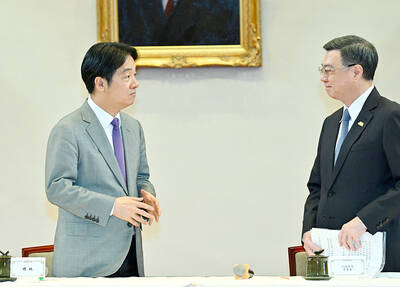When traveling with a digital camera you can snap away and it isn't long before you have captured hundreds of pictures. It can be quite a drag, however, when you find that you are running out of memory.
As a result, digital camera fanatics have been racking their brains to find out what can be done to shake off the hassle of changing memory sticks when they are on a photo-snapping spree.
To satisfy an increasingly demanding public, innovative manufacturers of electronic products have recently come up with a novel idea to store, view and share digital photos, movies and music -- all in a hassle-free way.
What they have come up with has been temporarily termed by some a "portable photo storage viewer."
Though an official name for the device has yet to be settled, some manufacturers are calling this sleek gadget with huge storage space a Portable Media Player (PMP), while yet others have named it a Personal Video Player (PVP).
Whatever it's called, it turns the tables on the notion of a portable music player, also known as an MP3 player, by supplying images in addition to sound.
The PMP (or PVP) offers far more than what a simple photo player can provide. It displays not only photographs, but also plays your favorite videos. Music can also be accessed and enjoyed at the press of a few buttons -- wherever you are and without worrying about when you will run out of memory. The various models launched by different manufacturers all feature a built-in 20GB hard drive for storage.
In addition to the huge storage space, a PMP likely sports a crystal-clear 3.5-inch TFT-LCD screen with 320 by 240 pixel resolution and 262,000 colors.
You can also download audio content directly into the player from other home or portable devices and it supports video playback in a number of formats such as AVI, MOV, MPEG-1, MPEG-2, AVI video files, and even MPEG-4, which is why it has also been called an "MP4 Player"
The PC savvy and early movers in the tech scene may also be concerned about the price, size, and battery life of this killer toy, but there is little to worry about in this department.
This all-encompassing device can be seen as your personal entertainment center and it also has great potential for commercial use.
Hypermarkets, outlets, convenience stores and so forth can use it as an electronic catalogue to advertise their goods, and salespeople can flaunt their products via this eye-catching gadget.
If you are in the market for a better way to store, carry around and share your photos, music and movies, you will definitely dig this hand held portable digital media player.

Under pressure, President William Lai (賴清德) has enacted his first cabinet reshuffle. Whether it will be enough to staunch the bleeding remains to be seen. Cabinet members in the Executive Yuan almost always end up as sacrificial lambs, especially those appointed early in a president’s term. When presidents are under pressure, the cabinet is reshuffled. This is not unique to any party or president; this is the custom. This is the case in many democracies, especially parliamentary ones. In Taiwan, constitutionally the president presides over the heads of the five branches of government, each of which is confusingly translated as “president”

Sept. 1 to Sept. 7 In 1899, Kozaburo Hirai became the first documented Japanese to wed a Taiwanese under colonial rule. The soldier was partly motivated by the government’s policy of assimilating the Taiwanese population through intermarriage. While his friends and family disapproved and even mocked him, the marriage endured. By 1930, when his story appeared in Tales of Virtuous Deeds in Taiwan, Hirai had settled in his wife’s rural Changhua hometown, farming the land and integrating into local society. Similarly, Aiko Fujii, who married into the prominent Wufeng Lin Family (霧峰林家) in 1927, quickly learned Hoklo (commonly known as Taiwanese) and

The Venice Film Festival kicked off with the world premiere of Paolo Sorrentino’s La Grazia Wednesday night on the Lido. The opening ceremony of the festival also saw Francis Ford Coppola presenting filmmaker Werner Herzog with a lifetime achievement prize. The 82nd edition of the glamorous international film festival is playing host to many Hollywood stars, including George Clooney, Julia Roberts and Dwayne Johnson, and famed auteurs, from Guillermo del Toro to Kathryn Bigelow, who all have films debuting over the next 10 days. The conflict in Gaza has also already been an everpresent topic both outside the festival’s walls, where

The low voter turnout for the referendum on Aug. 23 shows that many Taiwanese are apathetic about nuclear energy, but there are long-term energy stakes involved that the public needs to grasp Taiwan faces an energy trilemma: soaring AI-driven demand, pressure to cut carbon and reliance on fragile fuel imports. But the nuclear referendum on Aug. 23 showed how little this registered with voters, many of whom neither see the long game nor grasp the stakes. Volunteer referendum worker Vivian Chen (陳薇安) put it bluntly: “I’ve seen many people asking what they’re voting for when they arrive to vote. They cast their vote without even doing any research.” Imagine Taiwanese voters invited to a poker table. The bet looked simple — yes or no — yet most never showed. More than two-thirds of those